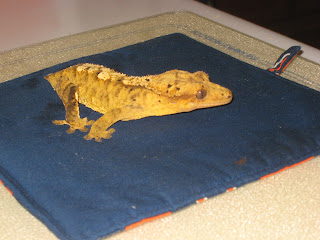While searching for one, I talked myself into getting two because I like having two of a species so they can interact. This time, we got healthy ones, both females. They were named Cheddar and Skye. Once they started eating and pooping, I realized just how sick that first pig must have been because these new ones were like machines. Things went in and came out just at an unbelievable rate. A little research led me to believe the first guinea pig had some kind of wasting disease. So sad.
Cheddar and Skye were youngsters and still kind of small. Guinea pigs (Cavia porcellus), also called cavies, are born ready to go, with their eyes open, teeth, claws and the ability to reproduce within a few weeks. They eat solid food and can readily move around right from birth. I put the two of them in a small, double level rat cage though I knew they would quickly outgrow it. During the day, I’d move them into a gated area that one might compare to a puppy playpen, but they tended to just huddle in one corner rather than walk around.
In my search to find them a better cage, I went to various pet stores but didn’t find anything big enough or reasonably priced. It was actually a manager at Petsmart who suggested I visit the website http://www.guineapigcages.com/ where one can learn to assemble a cage of any size easily and affordably. The materials can be purchased locally for most people. I could go into detail here about all of that, but it would be easier to just recommend readers visit the website for the best advice. It tells you where you can find the items needed and how much you’ll need depending on the number of guinea pigs you need to house or how much space you have to work with. You can even make cages with multiple levels.
I made a 2x4 grid cage for my two guinea pigs and had planned to add another level, but found this size worked well for us since we also took our pigs out for exercise. This size also fit great on our son’s old Thomas the Tank Engine train table that stood about one foot off the ground. I filled the bottom with Carefresh or similar bedding, added an Igloo shelter and a litter pan and that was it. Since we don’t have dogs or cats, this cage didn’t need a top so we could easily reach in to pet the pigs anytime. It also made cleaning very easy. I highly recommend this type of cage and the best part is it’s so cheap and easy to make if you just take the time to follow the directions. The site offers pre-made cages to purchase, but I think you would still have to assemble it at home after shipping.
In my opinion, pet stores don’t really offer the right type of cage for a guinea pig. None of them are big enough, especially if the animal is spending all his time in a cage. After viewing the various set-up options at guineapigcages.com, I was excited about building my pigs an easy-to-clean place where they would have room to move around a little. In our case, our pigs spent most of their time in the Igloo and only came out to eat, but they seemed very content and happy. They never tried to climb out, though sometimes the birds would perch on the ends of their cage or forage among their hay. I highly recommend this cage design.
These are our two guinea pigs. Our daughter would sometimes try to dress them up. Skye is pictured above and has hair that goes in different directions. Cheddar, below, has a smooth brown and white coat with a few tiny black spots.













